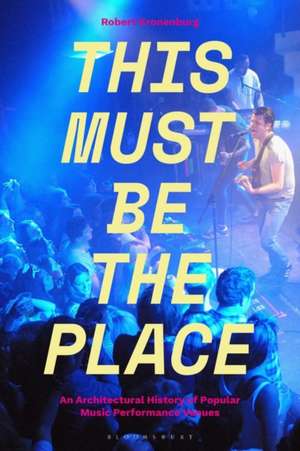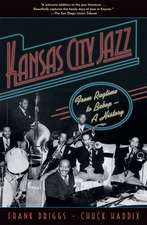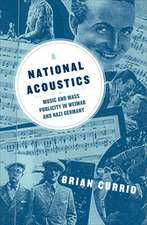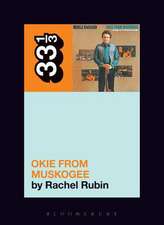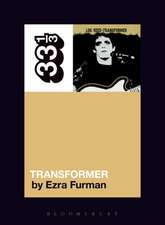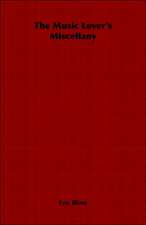This Must Be The Place: An Architectural History of Popular Music Performance Venues
Autor Dr Robert Kronenburgen Limba Engleză Paperback – 6 mar 2019
| Toate formatele și edițiile | Preț | Express |
|---|---|---|
| Paperback (1) | 187.70 lei 3-5 săpt. | +49.89 lei 6-10 zile |
| Bloomsbury Publishing – 6 mar 2019 | 187.70 lei 3-5 săpt. | +49.89 lei 6-10 zile |
| Hardback (1) | 833.47 lei 6-8 săpt. | |
| Bloomsbury Publishing – 6 mar 2019 | 833.47 lei 6-8 săpt. |
Preț: 187.70 lei
Preț vechi: 216.70 lei
-13% Nou
Puncte Express: 282
Preț estimativ în valută:
35.92€ • 39.00$ • 30.17£
35.92€ • 39.00$ • 30.17£
Carte disponibilă
Livrare economică 02-16 aprilie
Livrare express 18-22 martie pentru 59.88 lei
Preluare comenzi: 021 569.72.76
Specificații
ISBN-13: 9781501319280
ISBN-10: 1501319280
Pagini: 304
Ilustrații: 40 bw illus
Dimensiuni: 152 x 229 x 22 mm
Greutate: 0.48 kg
Editura: Bloomsbury Publishing
Colecția Bloomsbury Academic
Locul publicării:New York, United States
ISBN-10: 1501319280
Pagini: 304
Ilustrații: 40 bw illus
Dimensiuni: 152 x 229 x 22 mm
Greutate: 0.48 kg
Editura: Bloomsbury Publishing
Colecția Bloomsbury Academic
Locul publicării:New York, United States
Caracteristici
Examines a wide range of popular music buildings and spaces and explores their significance as a distinct genre
Notă biografică
Robert Kronenburg is the Roscoe Professor of Architecture at the University of Liverpool, UK.
Cuprins
List of PlatesList of FiguresPreface1 Introduction: Popular Music, Architecture and the Home2 Music Halls, Variety and Vaudeville3 Juke Joints and Honky Tonks4 Jazz Clubs, Social Clubs and Riverboats5 Cabaret, Speakeasies and Supper Clubs6 Pleasure Gardens, Ballrooms and Dance Halls7 Pubs, Barrooms and Coffee Bars8 Theatres, Halls and Auditoria9 Festival Stages and Travelling Sets10 Arenas11 Record Scenes12 Conclusion: The significance and value of popular music venuesAppendix I: Venue TypesAppendix II: Principle buildings described in the textBibliographyIndex
Recenzii
I always kept wonderful memories of popular music venues, but until now I've thought of them more as isolated locations of wonder and magic. This Must Be The Place ties these locations in a historical quilt of musical trends, celebrities, unknown performers, the designers who created them and their impact on the urban or sometimes not so urban fabric that surrounds them. The book allows the reader to connect the dots and look at the range of these places from honky-tonks to ballrooms in a seamless journey through time and space.
I always admired Rob Kronenburg's gift for unassuming writing style and ease in addressing very serious architecture matters. This Must Be The Place is no exception, if not a brilliant affirmation of such a gift. Underneath a very personable and inviting narrative there is a rigorous study of the architectural typology of urban pop music venues that tackles an untouched subject and makes an appealing argument for its importance both as a question of architecture and a matter of resistance in preserving the meaning of urban life. This Must Be The Place is not only a great read but also an important contribution to the field of architectural knowledge.
Between 1900 and 1934, Magic-City was a vast area in Paris devoted to popular entertainment, often referred to as un temple de plaisirs populaires. Sadly nothing has survived of Magic-City's ballrooms and music-halls - only a few photographs and postcards. The story of popular music performance venues is rooted in architecture and in cities. I'd like to think of Robert Kronenburg's book as a wonderful tribute to all the Magic-City temples, past, present and future!
I always admired Rob Kronenburg's gift for unassuming writing style and ease in addressing very serious architecture matters. This Must Be The Place is no exception, if not a brilliant affirmation of such a gift. Underneath a very personable and inviting narrative there is a rigorous study of the architectural typology of urban pop music venues that tackles an untouched subject and makes an appealing argument for its importance both as a question of architecture and a matter of resistance in preserving the meaning of urban life. This Must Be The Place is not only a great read but also an important contribution to the field of architectural knowledge.
Between 1900 and 1934, Magic-City was a vast area in Paris devoted to popular entertainment, often referred to as un temple de plaisirs populaires. Sadly nothing has survived of Magic-City's ballrooms and music-halls - only a few photographs and postcards. The story of popular music performance venues is rooted in architecture and in cities. I'd like to think of Robert Kronenburg's book as a wonderful tribute to all the Magic-City temples, past, present and future!
